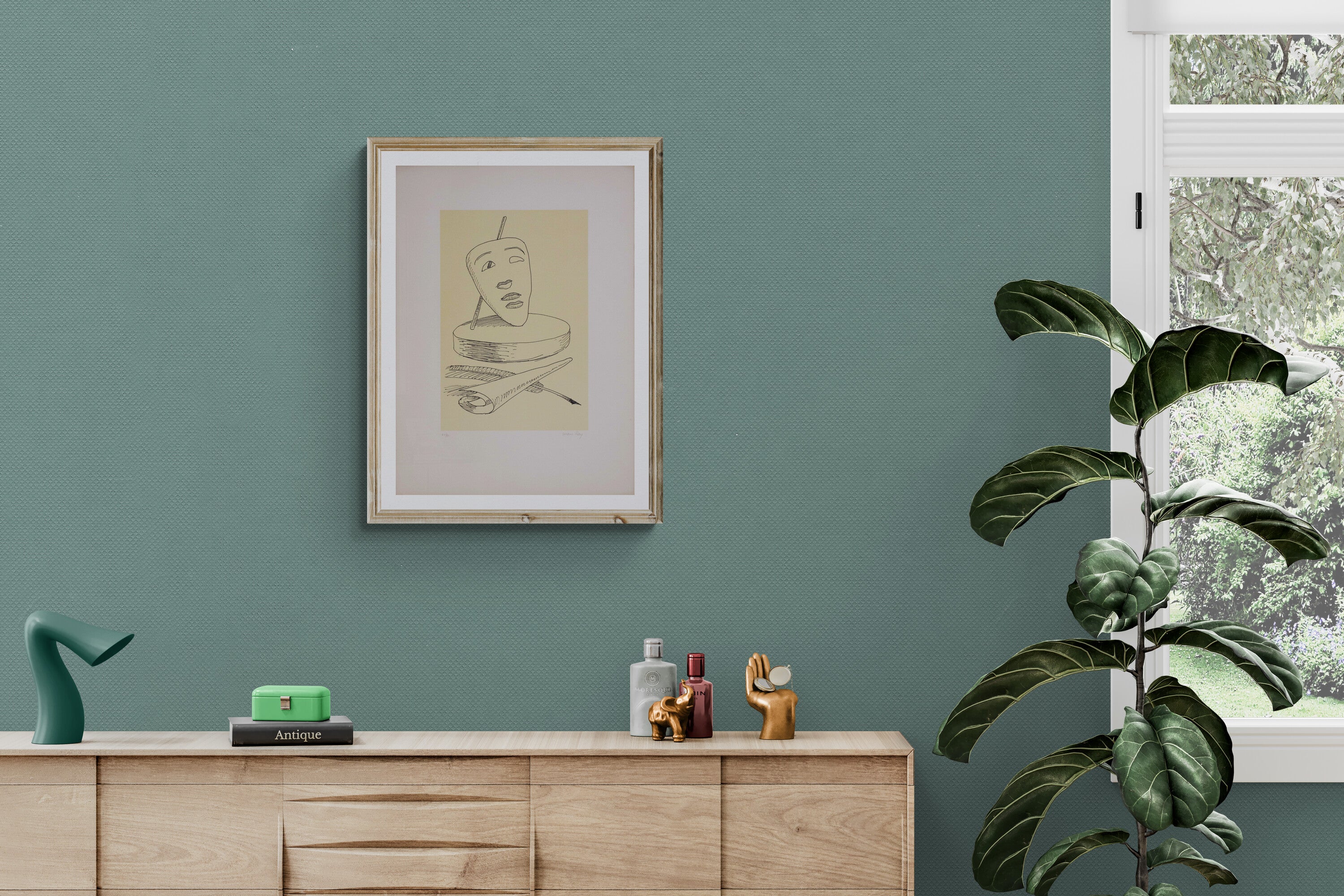Antonio Calderara biography

Antonio Calderara was an Italian painter and artist. He was born in Abbiategrasso on 28 October 1903 and his life unfolded between Milan and Lake Orta, a holiday destination and family residence. In particular, the latter will over time become a place of choice for artistic research, with the choice developed over time to live in Vacciago, a hamlet of Ameno, on the eastern shore. He began his studies in engineering at the Polytechnic of Milan and then abandoned them shortly after, continuing to cultivate his artistic vocation as a self-taught person. In 1932 Antonio Calderara met Carmela, the one who would become his future wife and with whom he would have a daughter, Gabriella. He married her in 1934 to please his mother who did not accept her son living in a free relationship, without the marital bond.
It is not easy to pigeonhole Antonio Calderara into a well-defined artistic line because he came into contact with many artistic personalities, Italian and foreign, who strongly influenced him over time, drawing great inspiration and technical learning from all of them. It is possible to attribute to him a first figurative period, under the influence of the first currents of the artistic group Novecento, with the aptitude for the use of color and light of pointillists such as Gaetano Previati, Giuseppe Pellizza da Volpedo and Georges Seurat. For the painter, at least in these early stages of study, light will prove to be the substance capable of permeating his metaphysical views, in which each element is connected and functional to the other. Throughout the twenties and thirties the artist's painting was engaged in landscapes and domestic scenes, firmly rooted in the Lombard tradition, moving along the tradition of Divisionism but also conditioned by the Milanese experience of the twentieth century. In 1934 his first exhibition took place in Milan, in the Bolaffi Gallery, and shortly afterwards he also exhibited in Orta, Pallanza, Omegna and Domodossola.
In the mid-1940s Antonio Calderara suffered a serious family loss following the premature death of his daughter at the age of 11, an episode that led him to a long personal and artistic crisis, which lasted at least until the early 1950s. In these years the painter concentrated a lot on portraits, almost all dedicated to his wife who he saw rejuvenating and identifying with his daughter. Woman who sews from 1951 is part of his figurative works in which the harmonies of colors give movement and lead to emotion in the contemplation of a common gesture, painted with small strokes of the brush in a precise geometry and transfigured details .
From 1954 we see him moving towards abstract painting in which he will focus particularly on the study of light with works in which abstract and linear subjects investigate light and colour, in search of the essence of the artistic gesture. Antonio Calderara was no longer interested in the study of space and the third dimension but solely in the transformation of light into color, a change determined by the meeting with Piet Mondrian, the Dutch painter who founded Neoplasticism . A light takes shape that translates his aspiration to paint nothingness, emptiness, which is everything, silence, light, order, harmony, everything that can be identified with the infinite. As he himself will say "the light that invades everything, that destroys everything to be the only protagonist". With an uncommon ambition, Calderara was reflected in the idea that her painting originated from her own need for light, a timid light unaware of its importance, a light that little by little clarified itself and the painter. , until she became the only conscious and responsible protagonist of his painting. In this period of his artistic production, his pencil drawings are also of particular importance, "paintings made with air" as Agnoldomenico Pica would say in the two books dedicated to them.
Abstractism arrives clearly in 1959 with the Spazio-luce series which continues throughout the sixties and definitively places him alongside all the artists of abstract expressionism. Thus began what he himself defines "his new adventure", starting non-figurative painting, human representation in a space of light, nothing that aspires to be a geometric figure. Antonio Calderara is particularly known in Germany in recent years, in which he fully expresses the ambition of a reality of image, which is no longer reality, but the highest, purest, most abstract expression of that reality. In this order, time loses the sense of its measurement to vanish in limitless space, in light without sources.
During the sixties Antonio Calderara survived three heart attacks, episodes which limited his painting and confined him to bed for long periods. In 1974 the artist received the gold medal from the Provincial Tourism Board of Novara to "testify to my activity as a painter and my love for Lake Orta" and in 1978 he was struck by a serious form of pneumonia which forces him to bed for a long period, until June of that year when his heart stops beating: "when I am at the end of my days, he will be happy to say that I lived on painting". Much of Calderara's artistic production is exhibited in the seventeenth-century building in Vacciago, on Lake Orta. A unique collection characterized by the international scope of the painter and characterized by consequential traits: the common thread is light, the sole and true protagonist of all his artistic production.




: invalid url input -->)